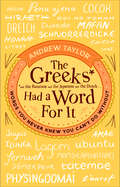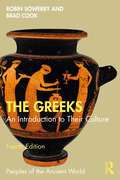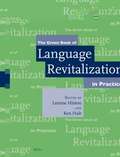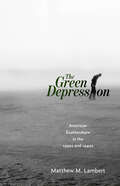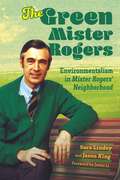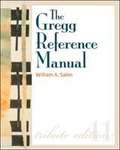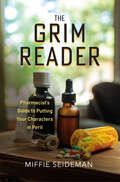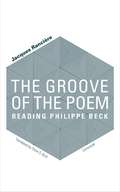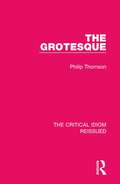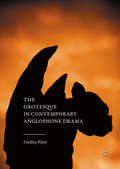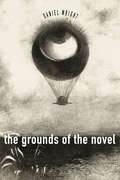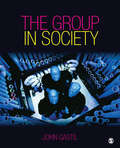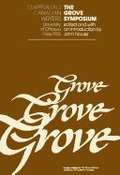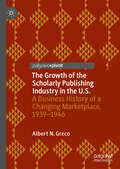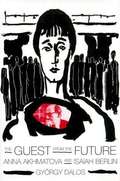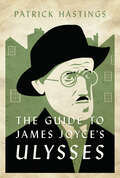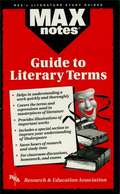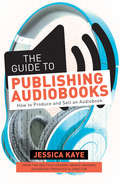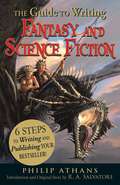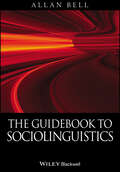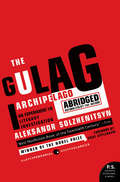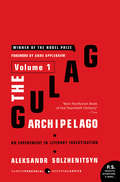- Table View
- List View
The Greeks Had a Word For It: Words You Never Knew You Can't Do Without
by Andrew TaylorDo you ever search in vain for exactly the right word? Perhaps you want to articulate the vague desire to be far away. Or you can’t quite convey that odd urge to go outside and check to see if anyone is coming. Maybe you’re struggling to express there being just the right amount of something – not too much, but not too little. While the English may not have a word for it, the good news is that the Greeks, the Norwegians, the Dutch or possibly the Inuits probably do. Whether it’s the Norwegian forelsket (that feeling of euphoria at the start of a love affair) or the Indonesian jayus (a joke so poorly told and so unfunny that you can’t help but laugh), this delightful smörgåsbord of wonderful words from around the world will come to the rescue when the English language fails. Part glossary, part amusing musings, but wholly enlightening and entertaining, The Greeks Had a Word For It means you’ll never again be lost for just the right word.
The Greeks: An Introduction to Their Culture (Peoples of the Ancient World)
by Robin Sowerby Brad CookThis fully revised, new edition of The Greeks is a concise but wide-ranging introduction to the culture of ancient Greece, providing a comprehensive survey that covers all the key elements of ancient Greek civilisation from the age of Homer to the Hellenistic period.It opens with an overview of ancient historical sources and their authors and perspectives before delving into early history, legends and excavations, and the famed age of classical Greece. Chapters follow on politics, religion, daily life, literature, philosophy, and art and architecture, with a concluding chapter on the Greek world following the death of Alexander the Great and during the Roman era. This new edition features: greater discussion of underrepresented groups, especially women and slaves; a chapter on ancient politics that provides a comparison of an ancient aristocracy, democracy, and monarchy in Sparta, Athens, and Macedon; new and revised images, all now with detailed captions to merge the artefacts and texts more fully and bring the narrative to life for every reader; and new translations of all ancient passages revised for accuracy and clarity. Clearly written, with generous references to original source material, The Greeks places ancient Greek culture firmly in its political, social, and historical context.The fourth edition of The Greeks remains an invaluable introduction for all students of Classics and an indispensable guide for students of other disciplines who require grounding in ancient Greek civilisation and history.
The Green Book of Language Revitalization in Practice
by Leanne Hinton Kenneth HaleWith world-wide environmental destruction and globalization of economy, a few languages, especially English, are spreading rapidly in use, while thousands of other languages are disappearing, taking with them important cultural, philosophical and environmental knowledge systems and oral literatures. We all stand to suffer from such a loss, none more so than the communities whose very identity is being threatened by the impending death of their languages. In response to this crisis, indigenous communities around the world have begun to develop a myriad of projects to keep their languages alive. This volume is a set of detailed accounts about the kind of work that is going on now as people struggle for their linguistic survival. It also serves as a manual of effective practices in language revitalization. Following are the key features: 23 case studies of language revitalization in practice, from Native American languages, Australian languages, Maori, Hawaiian, Welsh, Irish, and others, written primarily by authors directly involved in the programs; short introductions situate the languages, to help make the languages more 'real' in the minds of readers; each chapter gives a detailed overview of the various kinds of programs and methods in practice today; introductions and maps for each of the languages represented familiarize the reader with their history, linguistic structure and sociolinguistic features; and, strong representation in authorship and viewpoint of the people and communities whose languages are threatened, gives the readers an inside understanding of the issues involved and the community-internal attitudes toward language loss and revitalization. This book was previously published by Academic Press under ISBN 978-01-23-49354-5.
The Green Depression: American Ecoliterature in the 1930s and 1940s
by Matthew M. LambertDust storms. Flooding. The fear of nuclear fallout. While literary critics associate authors of the 1930s and ’40s with leftist political and economic thought, they often ignore concern in the period’s literary and cultural works with major environmental crises. To fill this gap in scholarship, author Matthew M. Lambert argues that depression-era authors contributed to the development of modern environmentalist thought in a variety of ways. Writers of the time provided a better understanding of the devastating effects that humans can have on the environment. They also depicted the ecological and cultural value of nonhuman nature, including animal “predators” and “pests.” Finally, they laid the groundwork for “environmental justice” by focusing on the social effects of environmental exploitation. To show the reach of environmentalist thought during the period, the first three chapters of The Green Depression: American Ecoliterature in the 1930s and 1940s focus on different geographical landscapes, including the wild, rural, and urban. The fourth and final chapter shifts to debates over the social and environmental effects of technology during the period. In identifying modern environmental ideas and concerns in American literary and cultural works of the 1930s and ’40s, The Green Depression highlights the importance of depression-era literature in understanding the development of environmentalist thought over the twentieth century. This book also builds upon a growing body of scholarship in ecocriticism that describes the unique contributions African American and other nonwhite authors have made to the environmental justice movement and to our understanding of the natural world.
The Green Mister Rogers: Environmentalism in Mister Rogers' Neighborhood (Children's Literature Association Series)
by Jason King Sara LindeyFred Rogers was an international celebrity. He was a pioneer in children’s television, an advocate for families, and a multimedia artist and performer. He wrote the television scripts and music, performed puppetry, sang, hosted, and directed Mister Rogers’ Neighborhood for more than thirty years. In his almost nine hundred episodes, Rogers pursued dramatic topics: divorce, death, war, sibling rivalry, disabilities, racism. Rogers’ direct, slow, gentle, and empathic approach is supported by his superior emotional strength, his intellectual and creative courage, and his joyful spiritual confidence. The Green Mister Rogers: Environmentalism in “Mister Rogers’ Neighborhood” centers on the show’s environmentalism, primarily expressed through his themed week “Caring for the Environment,” produced in 1990 in coordination with the twentieth anniversary of Earth Day. Unfolding against a trash catastrophe in the Neighborhood of Make-Believe, Rogers advances an environmentalism for children that secures children in their family homes while extending their perspective to faraway places, from the local recycling center to Florida’s coral reef. Rogers depicts animal wisdom and uses puppets to voice anxiety and hope and shows an interconnected world where each part of creation is valued, and love is circulated in networks of care. Ultimately, Rogers cultivates a practical wisdom that provides a way for children to confront the environmental crisis through action and hope and, in doing so, develop into adults who possess greater care for the environment and a capacious imagination for solving the ecological problems we face.
The Gregg Reference Manual: A Manual of Style, Grammar, Usage, and Formatting
by William SabinThe Gregg Reference Manual is intended for anyone who writes, edits, or prepares material for distribution or publication. For over fifty years this manual has been recognized as the best style manual for business professionals and for students who want to master the on-the-job standards of business professionals.
The Grim Reader: A Pharmacist's Guide to Putting Your Characters in Peril
by Miffie SeidemanMany authors draw from headlines or movies rather than personal experience to write drug-related scenes, and the result may be more fiction than fact. So, how can you craft a convincing scene involving accidental use of fentanyl-tainted pot or a murder attempt with grandma's pain pills?A much-needed resource, The Grim Reader details how to write medical scenarios that result in realistic page-turners. As drug inaccuracies multiply in screenplays, scripts, novels, and audio plays, Dr. Miffie Seideman, Pharm.D. provides writers (and editors) with the background and authenticity necessary to develop plausible plotlines, including: • Pertinent drug facts, tips, and symptoms • Symptom timelines • Tips for developing historically accurate scenes • Common street drug names and slang • Sample scenarios to demonstrate how to weave the information into a believable scene • Writing prompts to provide scene starters and offer practice Combining Seideman's pharmacology knowledge with her love for creative writing, The Grim Reader is the ultimate guide to help authors craft accurate drug scenes and avoid medical mistakes.
The Grimace of Macho Ratón: Artisans, Identity, and Nation in Late-Twentieth-Century Western Nicaragua
by Les FieldIn this creative ethnography Les W. Field challenges a post-Sandinista national conception of identity, one that threatens to constrict the future of subaltern Nicaraguans. Drawing on the works and words of artisans and artisanas, Indians, and mestizos, Field critiques the national ideology of ethnic homogeneity and analyzes the new forms of social movement that have distinguished late-twentieth-century Nicaragua. As a framework for these analytic discussions, Field uses the colonial-era play El Güegüence o Macho Ratón and the literature relating to it. Elite appropriations of El Güegüence construe it as an allegory of mestizo national identity in which mestizaje is defined as the production of a national majority of ethnically bounded non-Indians in active collaboration with the state. By contrast, Field interprets the play as a parable of cultural history and not a declaration of cultural identity, a scatological reflection on power and the state, and an evocation of collective loss and humor broadly associated with the national experience of disempowered social groups. By engaging with those most intimately involved in the performance of the play--and by including essays by some of these artisans--Field shows how El Güegüence tells a story about the passing of time, the absurdity of authority, and the contradictions of coping with inheritances of the past. Refusing essentialist notions of what it means to be Indian or artisan, Field explains the reemergence of politicized indigenous identity in western Nicaragua and relates this to the longer history of artisan political organization. Parting ways with many scholars who associate the notion of mestizaje with identity loss and hegemony, Field emphasizes its creative,productive, and insightful meanings. With an emphasis on the particular struggles of women artisans, he explores the reasons why forms of collective identity have posed various kinds of predicaments for this marginalized class of western Nicaraguans. This book will appeal to readers beyond the field of Latin American anthropology, including students and scholars of literature, intellectual history, women's studies, and the politics of ethnicity.
The Groove of the Poem: Reading Philippe Beck (Univocal)
by Jacques Rancière&“Music is the brute that shows. It is the avowal of materials, And stutters between its clanging of things.&”How should one think this musical groove of the poem whose back and forth motion shuffles the material of ordinary language and revives the frozen speech of old chants? This question by renowned French thinker Jacques Rancière is the entry point for his earnest and careful reading of one of France&’s most singular and important contemporary poets. For Rancière, Philippe Beck sets himself the task of a poetry after poetry whereby Beck re-writes and transforms the poems of the past, reanimating faded genres, poetizing the prose of popular tales and even commentaries regarding poems. To read and follow this groove traced as such cannot simply be done by way of taking the poems as objects of study. It supposes a dialogue regarding what these poems attempt to do as well as an idea of a poetry which serves as their foundation. This book on Philippe Beck is thus also a book made with him.
The Grotesque (The Critical Idiom Reissued #23)
by Philip ThomsonFirst published in 1972, this book provides a helpful overview of the grotesque and its use in a number of literary genres including novels, drama and poetry. After providing a historical summary of the term, the book discusses the various defining aspects of the grotesque and its relationship to other terms and modes of literature, such as satire, the comic and parody. The final chapter presents the functions and purpose of the grotesque in literature. This book will be a useful resource for those studying literary theory and literary works which include an element of the grotesque.
The Grotesque in Contemporary Anglophone Drama
by Ondřej PilnýGrotesque features have been among the chief characteristics of drama in English since the 1990s. This new book examines the varieties of the grotesque in the work of some of the most original playwrights of the last three decades (including Enda Walsh, Philip Ridley, Tim Crouch and Suzan-Lori Parks), focusing in particular on ethical and political issues that arise from the use of the grotesque.
The Grounds of the Novel
by Daniel WrightWhat grounds the fictional world of a novel? Or is such a world peculiarly groundless? In a powerful engagement with the latest debates in novel theory, Daniel Wright investigates how novelists reckon with the ontological status of their works. Philosophers who debate whether fictional worlds exist take the novel as an ontological problem to be solved; instead, Wright reveals the novel as a genre of immanent ontological critique. Wright argues that the novel imagines its own metaphysical "grounds" through figuration, understanding fictional being as self-sufficient, cohesive, and alive, rather than as beholden to the actual world as an existential anchor. Through philosophically attuned close readings of novels and reflections on writerly craft by Thomas Hardy, Olive Schreiner, Colson Whitehead, Virginia Woolf, Zadie Smith, Henry James, and Akwaeke Emezi, Wright shares an impassioned vision of reading as stepping into ontologically terraformed worlds, and of literary criticism as treading and re-treading the novel's grounds.
The Group in Society
by John W. GastilThe Group in Society meets the challenges of teaching courses on small groups by revealing the full complexity of small groups and their place in society. It shows students the value of learning how to carefully study a group's history and context, rather than merely learning a fixed set of group participation skills. This text brings together disparate theories and research (from communication, social psychology, organizational and managerial studies, and sociology) in a way that helps students make sense of a complex body of scholarship on groups.
The Grove Symposium
by John NauseThe Grove symposium deserves to be and, indeed, will long be remembered as setting the standard by which future discussions of the works of Canadian authors are judged.
The Growth of the Scholarly Publishing Industry in the U.S.: A Business History of a Changing Marketplace, 1939–1946
by Albert N. GrecoThis book analyzes the dynamic growth of the scholarly publishing industry in the United States during 1939-1946, a critical period in the business history of scholarly publications in STM and the humanities and the social sciences. It explains how the key publishing players positioned themselves to take advantage of the war economy and how they used different business and marketing strategies to create the market and demand for scholarly publications. Not only did the atomic threat necessitate a surge in scholarly research, but at the same time scholarly publishing managers prepared for the dramatic shift by anticipating the potential impact of the GI Bill on higher education, creating superb printed products, and by becoming the brand, the source of knowledge and information. The creation of strategic business units and value chains as well as the development of marketing targeting strategies resulted in brand loyalty to certain publishers and publications but also accelerated the growth of the US scholarly publishing industry. Business historians and marketing professors interested in the business strategies of scholarly publishers during World War II will find this book to be a valuable resource.
The Guest from the Future: Anna Akhmatova and Isaiah Berlin
by Gyorgy Dalo Andrea Dunai Antony WoodIn 1945 Berlin, Russian-born Oxford professor & first secretary for the British Embassy in Moscow, visited Russian poet Akhmatova. She saw him as a visitor from the democratic world that she'd never experienced. The KGB saw him as a British spy. The book deals with the interesting relationship between these extraordinary individuals as well as the history of Russia before and after communism, especially just after World War II.
The Guide to James Joyce's Ulysses
by Patrick HastingsFrom the creator of UlyssesGuide.com, this essential guide to James Joyce's masterpiece weaves together plot summaries, interpretive analyses, scholarly perspectives, and historical and biographical context to create an easy-to-read, entertaining, and thorough review of Ulysses.In The Guide to James Joyce's 'Ulysses,' Patrick Hastings provides comprehensive support to readers of Joyce's magnum opus by illuminating crucial details and reveling in the mischievous genius of this unparalleled novel. Written in a voice that offers encouragement and good humor, this guidebook maintains a closeness to the original text and supports the first-time reader of Ulysses with the information needed to successfully finish and appreciate the novel. Deftly weaving together spirited plot summaries, helpful interpretive analyses, scholarly criticism, and explanations of historical and biographical context, Hastings makes Joyce's famously intimidating novel—one that challenges the conventions and limits of language—more accessible and enjoyable than ever before. He unpacks each chapter of Ulysses with episode guides, which offer pointed and readable explanations of what occurs in the text. He also deals adroitly with many of the puzzles Joyce hoped would "keep the professors busy for centuries." Full of practical resources—including maps, explanations of the old British system of money, photos of places and things mentioned in the text, annotated bibliographies, and a detailed chronology of Bloomsday (June 16, 1904—the single day on which Ulysses is set)—this is an invaluable first resource about a work of art that celebrates the strength of spirit required to endure the trials of everyday existence. The Guide to James Joyce's 'Ulysses' is perfect for anyone undertaking a reading of Joyce's novel, whether as a student, a member of a reading group, or a lover of literature finally crossing this novel off the bucket list.
The Guide to Literary Terms (MAXNotes Literature Guides)
by Gail RaeREA's MAXnotes Guide to Literary Terms REA's book is a concise, easy-to-use guide to the literary terms and devices which high school and undergraduate students encounter most often. The main body of the book is an alphabetical listing of approximately 150 of the most-commonly encountered literary terms or devices. The entries are simplified to enable students with no knowledge of the terms to become comfortable with their uses in a short time. Each entry in the book includes a definition of the literary term or device, a history of the term's use and origin, and specific references to texts in which the term has been used.
The Guide to Publishing Audiobooks: How to Produce and Sell an Audiobook
by Jessica KayeWhat You Need to Know to PUBLISH YOUR AUDIOBOOK!The Guide to Publishing Audiobooks has everything you need to know to acquire rights, produce, publish, and distribute audiobooks to expand your audience for both fiction and nonfiction, and how you can increase your bottom line in the process. Multiple Grammy Award-winning audiobook producer and director Jessica Kaye shares invaluable knowledge garnered in her years as an entertainment and publishing attorney, and audiobook publisher, producer, director, and distributor. With her insights, you'll learn how to evaluate a potential audiobook project, obtain the rights for audio publishing, or self-publish your own audiobook. This comprehensive, easy-to-understand guide shows you how to:Create a high-quality production including best practices for effectively working with narrators, producers, directors, engineers, and sound editors.Choose an appropriate narrator.Understand and manage distribution in the digital age.Plus, this guide includes examples of commonly used audiobook contracts and explanations of key industry terms so you can feel confident in your business dealings. Whether you're an independent publisher looking to expand your business or an author trying to grow your readership, The Guide to Publishing Audiobooks is your go-to resource for navigating the audiobook industry.
The Guide to Writing Fantasy and Science Fiction: 6 Steps to Writing and Publishing Your Bestseller!
by Philip Athans R. A. SalvatoreScience fiction and fantasy is one of the most challenging--and rewarding!--genres in the bookstore. But with New York Times bestselling author Philip Athans and fantasy giant R. A. Salvatore at your side, you&’ll create worlds that draw your readers in--and keep them reading! Just as important, you&’ll learn how to prepare your work for today&’s market. Drawing on his years of experience as one of the most acclaimed professionals in publishing, Wizards of the Coast editor Athans explains how to set your novel apart--and break into this lucrative field. From devising clever plots and building complex characters to inventing original technologies and crafting alien civilizations, Athans gives you the techniques you need to write strong, saleable narratives.Plus! Athans applies all of these critical lessons together in an unprecedented deconstruction of a never-before-published tale by the one and only R. A. Salvatore!There are books on writing science fiction and fantasy, and then there&’s this book--the only one you need to create strange, wonderful worlds for your own universe of readers!
The Guidebook to Sociolinguistics (Introducing Linguistics Ser.)
by Allan BellThe Guidebook to Sociolinguistics presents a comprehensive introduction to the main concepts and terms of sociolinguistics, and of the goals, methods, and findings of sociolinguistic research. Introduces readers to the methodology and skills of doing hands-on research in this field Features chapter-by-chapter classic and contemporary case studies, exercises, and examples to enhance comprehension Offers wide-ranging coverage of topics across sociolinguistics. It begins with multilingualism, and moves on through language choice and variation to style and identity Takes students through the challenges involved in conducting their own research project Written by one of the leading figures in sociolinguistics
The Guinea Pig ABC
by Kate DukeEach letter of the alphabet is illustrated by a word which applies to pictured guinea pigs.
The Gulag Archipelago 1918-1956: An Experiment in Literary Investigation (P. S. Ser.)
by Aleksandr I. Solzhenitsyn“BEST NONFICTION BOOK OF THE 20TH CENTURY.” —Time“It is impossible to name a book that had a greater effect on the political and moral consciousness of the late twentieth century.” —David Remnick, The New YorkerThe Nobel Prize winner’s towering masterpiece of world literature, the searing record of four decades of terror and oppression, in one abridged volume (authorized by the author). Features a new foreword by Anne Applebaum.Drawing on his own experiences before, during and after his eleven years of incarceration and exile, on evidence provided by more than 200 fellow prisoners, and on Soviet archives, Solzhenitsyn reveals with torrential narrative and dramatic power the entire apparatus of Soviet repression, the state within the state that once ruled all-powerfully with its creation by Lenin in 1918. Through truly Shakespearean portraits of its victims-this man, that woman, that child-we encounter the secret police operations, the labor camps and prisons, the uprooting or extermination of whole populations, the “welcome” that awaited Russian soldiers who had been German prisoners of war. Yet we also witness astounding moral courage, the incorruptibility with which the occasional individual or a few scattered groups, all defenseless, endured brutality and degradation. And Solzhenitsyn’s genius has transmuted this grisly indictment into a literary miracle.“The greatest and most powerful single indictment of a political regime ever leveled in modern times.” —George F. Kennan“Solzhenitsyn’s masterpiece. . . . The Gulag Archipelago helped create the world we live in today.” —Anne Applebaum, Pulitzer Prize-winning author of Gulag: A History, from the foreword
The Gulag Archipelago Volume 1: An Experiment in Literary Investigation
by Aleksandr I. Solzhenitsyn“BEST NONFICTION BOOK OF THE 20TH CENTURY.” —TimeVolume 1 of the gripping epic masterpiece, Solzhenitsyn's chilling report of his arrest and interrogation, which exposed to the world the vast bureaucracy of secret police that haunted Soviet society. Features a new foreword by Anne Applebaum.“The greatest and most powerful single indictment of a political regime ever leveled in modern times.” —George F. Kennan“It is impossible to name a book that had a greater effect on the political and moral consciousness of the late twentieth century.” —David Remnick, The New Yorker“Solzhenitsyn’s masterpiece. . . . The Gulag Archipelago helped create the world we live in today.” —Anne Applebaum, Pulitzer Prize-winning author of Gulag: A History, from the foreword
